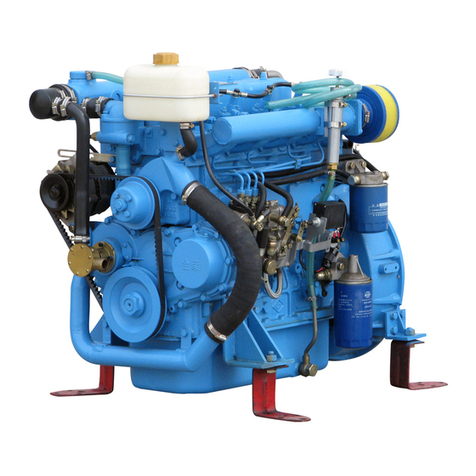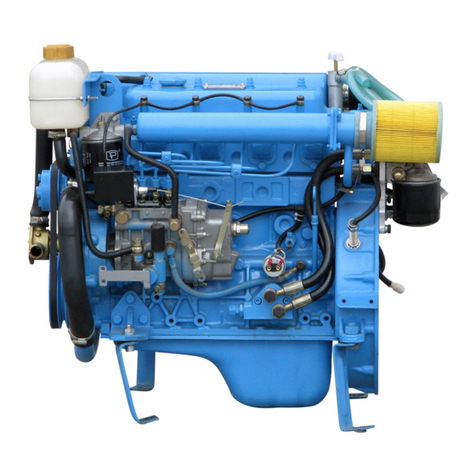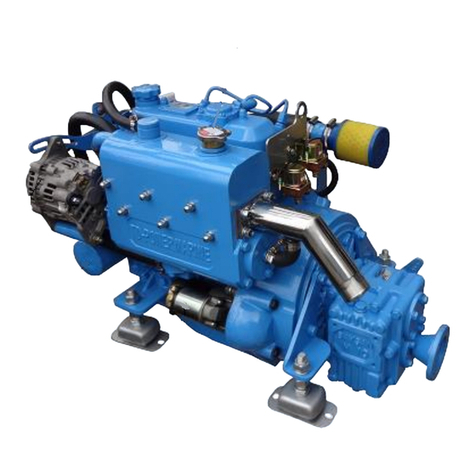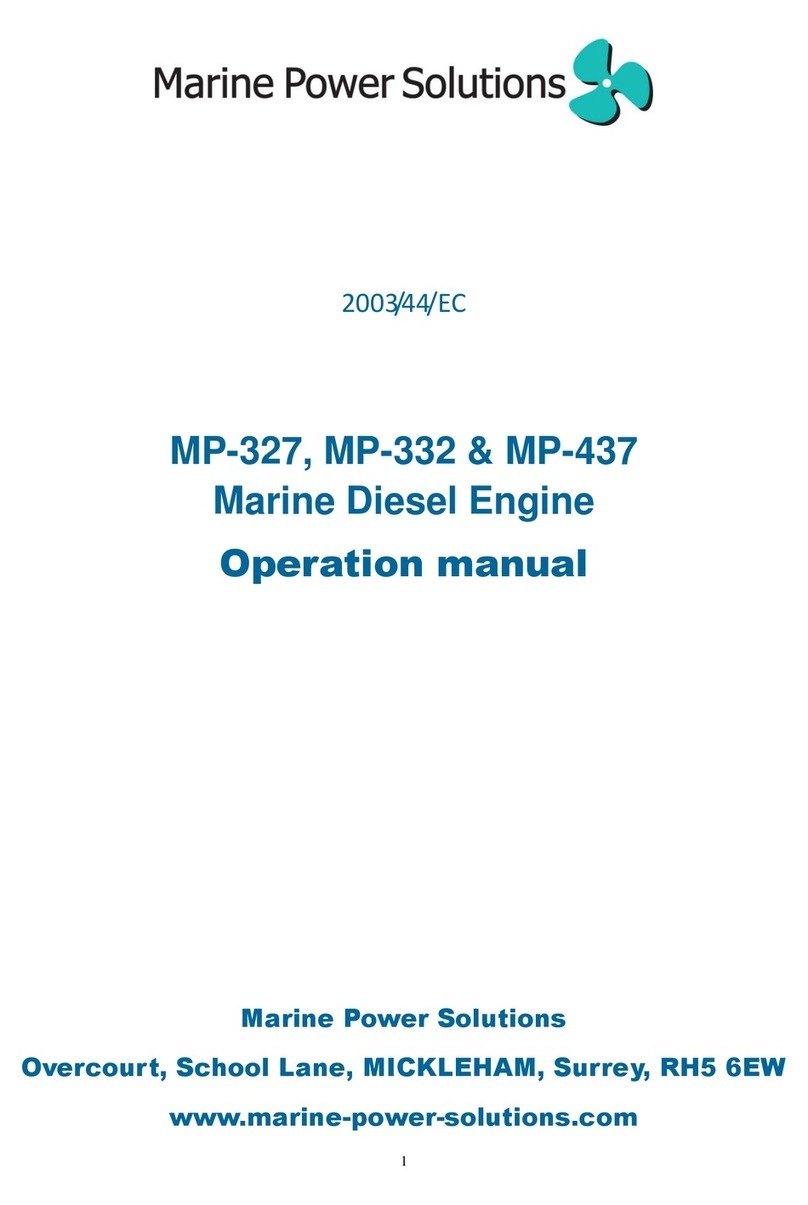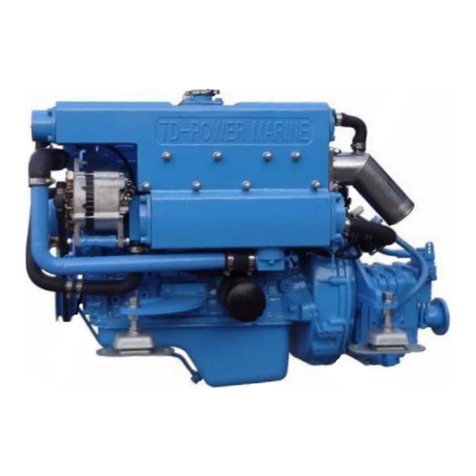
2. General information
Important information concerning the function to your engine
2.1 Fuel
Users can select the proper grade of fuel according to the local ambient temperature as follows:
ASTM D975No.1-D No.2-D……for USA
EN590:96………………………..for EU
ISO8217DMX……………………international
BS2869-A1 A2……………………for UK
JIS K2204…………………………for JAPAN
Before being filled into the engine fuel tank, the diesel fuel must be settled for a long period (normally at
least 48h). Then draw out the upper part. The fuel should be filtered by silk cloth while filling into the
fuel tank. Also let the fuel settle. It will extend service life of injectors and injection pumps.
2.2 Lubricating Oil
You should use 15W/40 lube oil for every ambient temperature. Filter the oil before filling into the
engine
2.3 Cooling Water
It’s recommended to use soft water for engine cooling system, such as rain water, or city tap water, or
clean river water, also it is necessary to add anti-freeze to the soft water before filling into the engine
when the engine operates in the cold weather. Cooling water containing too much minerals will from
water scale in an engine cooling system, affecting the engine cooling efficiency and giving rise to engine
troubles.
If it’s difficult to start the engine under lower ambient temperature, heat the water to about 80℃before
filling it into the cooling system.
2.4 Running In
A new engine diesel engine requires careful running in during the first 20 working hours. Run the engine
as for normal operations but do not load the engine fully during this period. Unnecessary idling with an
unloaded engine should always be avoided. A greater consumption of lubricating oil during the
running-in period is usual. Check the oil level more often during the running-in period.
